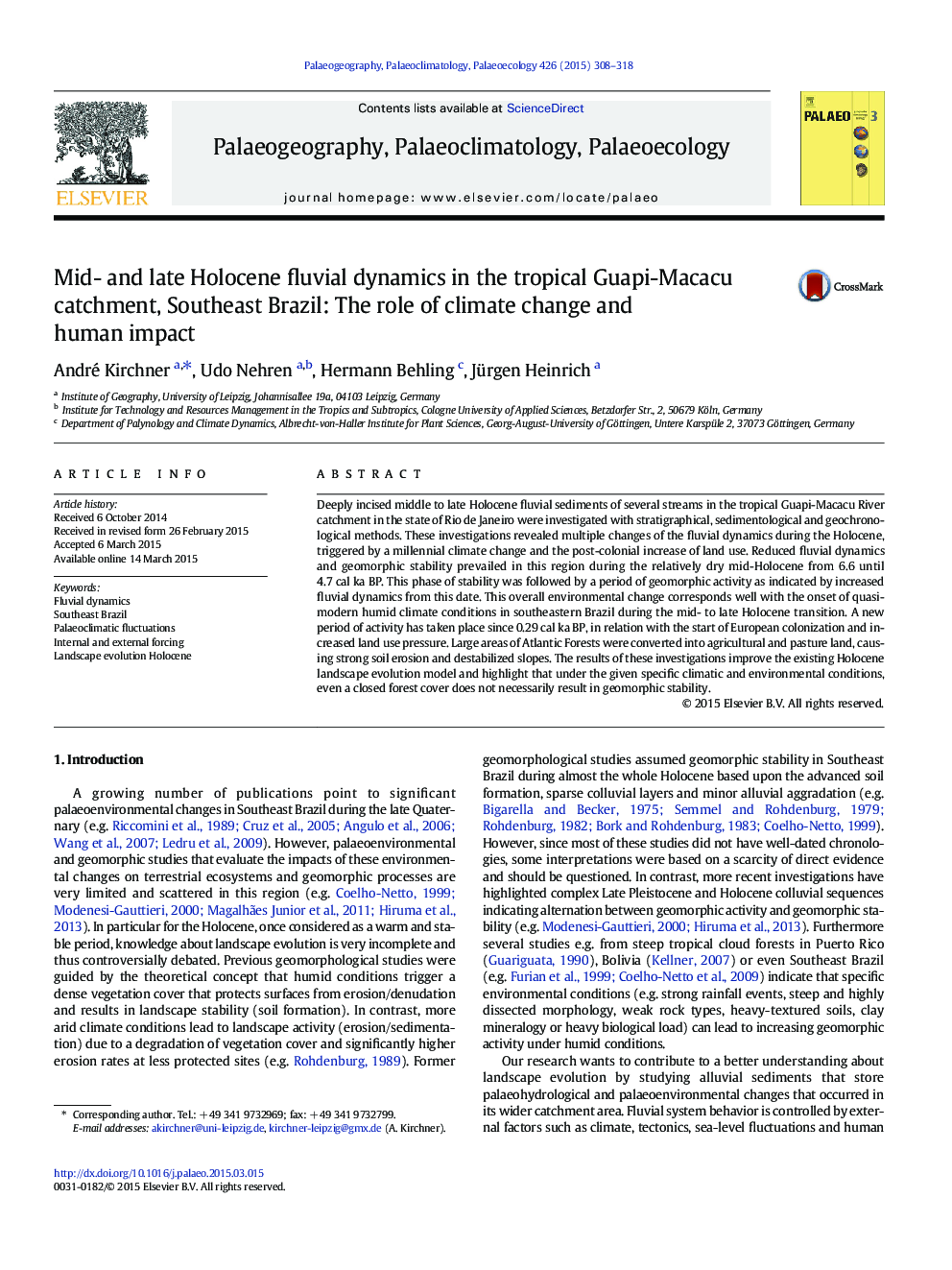| کد مقاله | کد نشریه | سال انتشار | مقاله انگلیسی | نسخه تمام متن |
|---|---|---|---|---|
| 4466001 | 1622164 | 2015 | 11 صفحه PDF | دانلود رایگان |
• The study focuses on fluvial deposits as natural geoarchives in SE-Brazil.
• Reduced fluvial dynamics/geomorphic stability prevailed from 6.6 to 4.7 cal ka BP.
• Increased fluvial dynamics prevailed during the late Holocene (after 4.7 cal ka BP).
• Fluvial dynamics were triggered by climate and anthropogenic influences.
• Specific environmental conditions should be regarded in landscape evolution models.
Deeply incised middle to late Holocene fluvial sediments of several streams in the tropical Guapi-Macacu River catchment in the state of Rio de Janeiro were investigated with stratigraphical, sedimentological and geochronological methods. These investigations revealed multiple changes of the fluvial dynamics during the Holocene, triggered by a millennial climate change and the post-colonial increase of land use. Reduced fluvial dynamics and geomorphic stability prevailed in this region during the relatively dry mid-Holocene from 6.6 until 4.7 cal ka BP. This phase of stability was followed by a period of geomorphic activity as indicated by increased fluvial dynamics from this date. This overall environmental change corresponds well with the onset of quasi-modern humid climate conditions in southeastern Brazil during the mid- to late Holocene transition. A new period of activity has taken place since 0.29 cal ka BP, in relation with the start of European colonization and increased land use pressure. Large areas of Atlantic Forests were converted into agricultural and pasture land, causing strong soil erosion and destabilized slopes. The results of these investigations improve the existing Holocene landscape evolution model and highlight that under the given specific climatic and environmental conditions, even a closed forest cover does not necessarily result in geomorphic stability.
Journal: Palaeogeography, Palaeoclimatology, Palaeoecology - Volume 426, 15 May 2015, Pages 308–318
